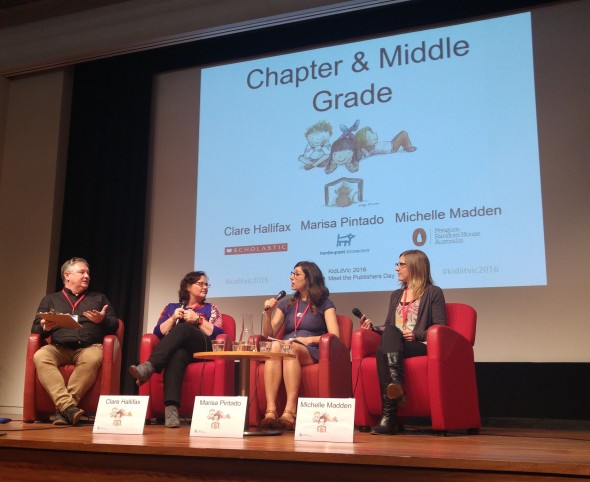I thought I’d recap some highlights from KidLitVic 2016 before I descend into a post-conference, hot chip and gravy scoffing pile of exhaustion *may be too late*.
This was the first ever KidLitVic conference, also known as ‘Meet the Publishers’, put on by children’s authors Alison Reynolds, Dee White and Jaquelyn Muller, and illustrator Nicky Johnston (who all did the most amazing job). Held in Melbourne’s State Library on 7 May, it was a day full of insightful panel talks on everything from picture books through to YA, featuring some of Australia’s top children’s publishers. There was an illustrator showcase, one-on-one feedback appointments with editors/publishers/an agent plus pitching sessions, all followed by a cocktail party. So, what did we learn? Gazillions of things (like, hardly any guys come to children’s writing festivals, haha!), but I came away with a few strong overall messages:
Think commercially
This was reiterated again and again. Your writing might be good, but if your book’s not marketable it won’t be picked up. As a writer (or illustrator) you have to think beyond the story you want to tell to whether it will sell. This is the reality of publishing. So, the more insights you can gain into what publishers and the market want, the better.
You are your brand
Self-promotion in the form of social media and everything internet, along with events like writers’ festivals, school visits etc. are all part of being an author. Clare Hallifax of Scholastic said ‘you do become a brand’ and ‘there is a huge need for authors to be self-promoting’. Michelle Madden from Penguin wants ‘a person who can empathise with gatekeepers’.
Write all the books
Publishers are not interested in one hit wonders. Many said that they want to know you have (and can) write lots of books – that you’re worth investing in. Marisa Pintado of Hardie Grant wants ‘an author ready to write lots of books’. Publishers want career authors, not someone who’s rustled up a manuscript and just wants it published, with no intention of a book-creating future.
More to come in Part 2!


